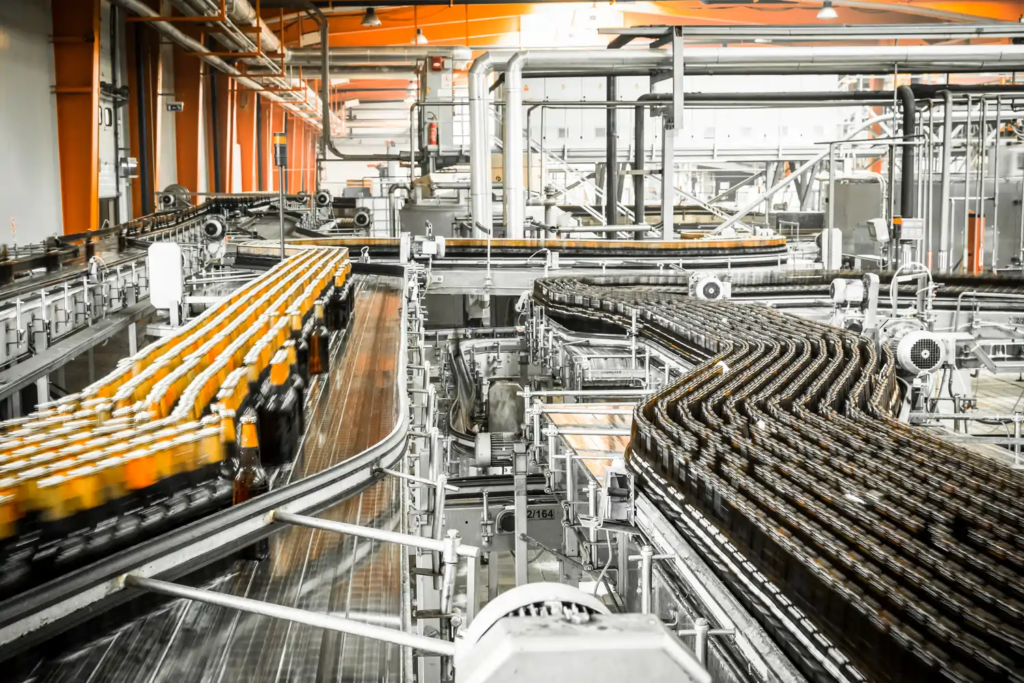
Today’s food and beverage industry relies on complex machinery to produce the products we consume. To keep operations running smoothly, it is essential to have a system that can monitor the health and performance of this equipment. Enter vibration monitoring: a method of monitoring vibration to detect irregularities and diagnose potential problems before they occur.
This article will explore the importance of vibration surveillance in this industry and how this technology can help keep operations running smoothly. We will discuss the advantages of vibration surveillance and analysis, how it works, and the challenges that can arise when using it. Finally, we will look at how implementing these systems can help to ensure the safety and quality of food and beverage products. So, let’s dive in and explore more.
What is Vibration Monitoring?
Vibration monitoring is a type of predictive maintenance that is used in machinery within the food and beverage industry to detect abnormal machine vibration and diagnose potential problems in machinery before they arise. By measuring the operation of machine parts via vibration sensors, any changes in amplitude, frequency, and energy can be tracked to determine if any issues are present. This helps diagnose machine faults with bearings, pumps, valves, motors, and other equipment like rotating machinery that could cause costly downtime or, worse, product spoilage. Along with the ability to diagnose most common machine faults, these systems and practices can also be used to assess the overall condition of the critical machines and assist in creating local predictive maintenance practices specific to your operations for maintenance teams.
Regularly tracking the vibration of the parts allows trends to be identified and potential issues to be anticipated before they become serious. This can help identify problems before they cause costly downtime and keep the production line running smoothly.
Preventive Maintenance in the Food and Beverage Industry
Preventive maintenance via vibration surveillance is an essential tool for the efficient and safe operation of food and beverage production lines. By monitoring the machines’ vibrations and implementing alarm notification capabilities, it is possible to detect irregularities in the equipment process before they cause extensive damage or shutdown. In addition, vibration monitoring can help prevent downtime, detect basic machine health, and reduce energy costs by predicting imminent equipment failures and fixing them before they occur.
High Quality, High Output, High Returns
Vibration monitoring is an invaluable tool for the food and beverage industry. It helps to ensure that the products are of the highest quality and that the machinery is functioning correctly. By detecting abnormal machine vibration and potential problems quickly, it can reduce downtime and costs and keep operations running smoothly.
Types of Solutions Used in the Food and Beverage Industry
Vibration monitoring is a critical tool for ensuring the efficient and safe operation of the food and beverage industry. It can come in many different formats. Monitoring production equipment with wireless vibration sensors can detect various issues, such as bearing wear, misalignment, and resonance, that might otherwise go undetected.
Vibration monitoring can help prevent costly repairs and downtime by detecting these irregularities and diagnosing potential problems.
Several types of vibration monitoring are used in the food and beverage industry.
These types of vibration monitoring provide the food and beverage industry with valuable insights into the health and performance of their equipment. Vibration monitoring can ensure that the equipment is operating correctly and efficiently. It can also help to reduce repair costs and downtime, leading to a more efficient and profitable operation.
Challenges of Vibration Monitoring in the Food and Beverage Industry
Specific monitoring is an integral part of ensuring the health and performance of machines in the food and beverage industry. By keeping devices running at their optimal performance, monitoring can help reduce downtime, minimize waste, and increase safety for both the equipment and the people using it.
Though this type of monitoring has numerous advantages, many challenges are still associated with its use in the food and beverage industry. Most notably, vibration analysis requires expertise and experienced maintenance teams to interpret the data it collects accurately. Additionally, vibration monitoring equipment can be costly and require regular maintenance, increasing the cost of upkeep. Finally, the food and beverage industry faces unique challenges, such as monitoring items like conveyor belts, which can be challenging to measure with vibration monitoring.
Using Wireless Vibration Sensors Effectively
Vibration monitoring is essential for the food and beverage industry due to modern machinery’s high complexity. Vibration monitoring helps identify any irregularities which may indicate that something needs to be addressed.
For example, an increase detected from the vibration sensors along your bottling operation or drive train could indicate an issue with the machine that needs to be addressed before it causes a breakdown in production.
The Bottom Line
In summary, vibration monitoring is essential to the food and beverage industry. It is a way of detecting irregularities and diagnosing potential problems before they occur, which helps to keep operations running smoothly. Vibration monitoring has several advantages, including cost savings, improved safety, and increased reliability.
Vibration monitoring is a valuable capability used in the food and beverage industry. By adopting predictive maintenance practices through vibration data analysis, companies become better informed on the health of their operation.
By using vibration monitoring, companies can monitor equipment health, detect irregularities, and diagnose potential problems before they occur. This helps keep operations running smoothly and reduces downtime.
